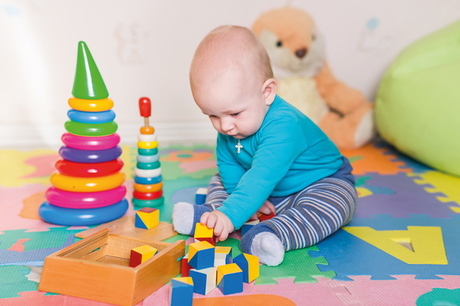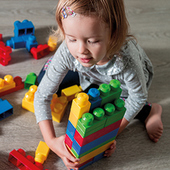
There are a few types of play that children have been interested in for generations. One of these is construction play. You may not recognise this term, but the chances are that as a child you played with cubes of wood or rectangles of plastic with the name of Lego! While many parents in the past would have bought these toys just to entertain their child, today the benefits of construction play in all its forms are considered to be important in children’s development.
FIVE THINGS PARENTS NEED TO KNOW ABOUT CONSTRUCTION PLAY
1. Lots of play opportunities
Any toy or resource that allows children to build in some way can be seen as construction play. This includes cardboard boxes and wooden bricks as well as the more conventional interlocking bricks. At first, most children enjoy playing with an adult or by themselves, but as children develop, they may develop projects with other children. Having said this, too many ‘architects’ can fall out!
2. Learning about mathematics and science
One of the reasons why construction play is so important for all children is that it helps them to understand the link between shape, space and size. By building with blocks, children start to be able to judge and compare size and shapes. Children’s understanding of shape often becomes increasingly sophisticated and it is not unusual for children at five years old to be able to produce some very complex structures. In addition, building with blocks helps children to learn some early scientific concepts about cause and effect.
3. Early design and creativity
It is easy to think of creativity and design as being about drawing and painting, but construction play can help develop children’s creativity and design skills as well. At first, children often build things without much thought or intention, but as they develop, they start to plan what they want to build and also choose materials and shapes accordingly. While some of the design choices that children make can appear bewildering to an adult, the great thing about children is that they are not bound by convention or practicality – a swimming pool in a farm building? Why not!
4. Hand-eye co-ordination
Most construction play requires a level of hand-eye co-ordination and ability to manipulate objects, and is ideal for honing these skills. Being able to place a block carefully on top of another takes real skill in focusing and positioning, while being able to push two interlocking blocks together requires a level of strength within the hands.
5. Minding the gender gap
Unfortunately, some construction toys are seen as ‘boys’ toys’ by children themselves. If you have a daughter, you may find that at your early years setting, construction play is not one of the things that your child seems to choose. This is because from the age of three years, children often tend to choose play things according to an unwritten gender rule when they are with their peers. The good news is that in the home, you can create a space where your daughter can develop an interest in this type of play.
MAKING CONSTRUCTION PLAY FUN
There are many ways that you can help your child to enjoy construction play. Here are a few tips that are worth considering:
Choose the right toys
While your child does not need new toys – second-hand ones are fine – it is important to select the right construction toy for your child’s stage of development. As parents, we are often tempted to get something aimed at older children. But when it comes to construction toys, this is likely to backfire as a strategy as your child will quickly become frustrated and uninterested.
In the same way, avoid the many construction toys that cannot be used in a variety of ways and so enable your child to make lots of different things. If you are unsure, think about borrowing first from friends and/or asking the advice of your child’s early years setting.
Spark your child’s interest
If your child has so far not been keen on using construction toys at home, consider getting them out and playing with them yourself. Many children are intrigued first to watch their parents build things and this can be a good way of getting your child interested. It is common to find that your child will then either want to help you or will start to build their own constructions alongside. Sometimes what they build is meant to complement what you are doing. The trick once children are starting to build is to show interest in what they are doing, but not to bombard them with questions or suggestions.
 Combine materials
Combine materials
Young children are a little like chefs. As well as the main ingredient, the construction toy, they are likely to want to bring other bits and pieces into their play. This means that children are likely to bring some toy play people, farm animals and everyday items to this type of play. You can support this additional creativity by not worrying about things getting mixed up and also by putting out one or two things. A ball of wool or a shoe box might be ignored by your child, or on the other hand-woven by some into what they are creating.
AND FINALLY…
One of the downsides of construction play is often that the items that your child has created have to be moved or demolished. This can cause children to become distressed as, quite rightly, they are likely to be proud of their achievements and don’t want them dismantled.
If you are able to keep what they have made, it is always better to do so and, over time, most children will of their own accord take it apart as they may want to redesign or need the materials for a ‘better’ project. If you cannot do this, think about taking a series of photographs and reassure your child that together, using the photos, you can build it again.
[asset_library_tag 1383,Download the PDF]









